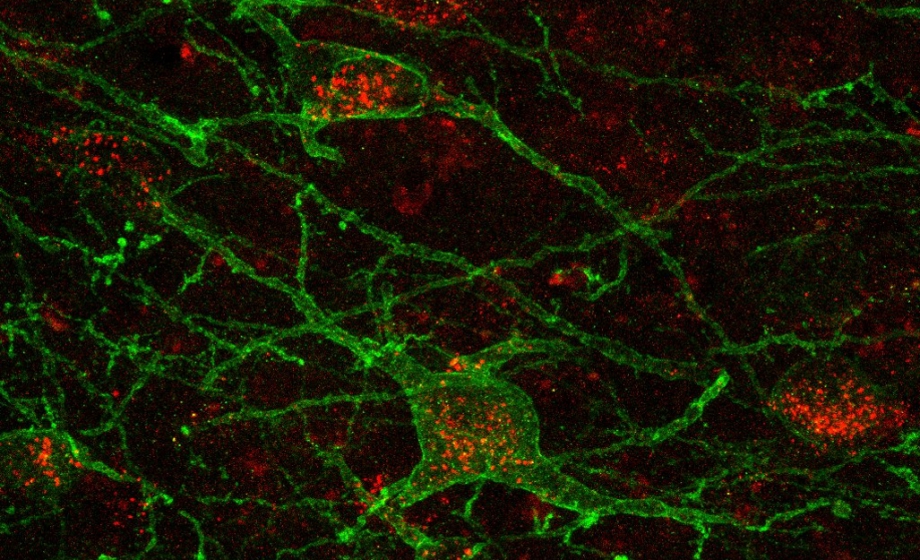Q&A Report: Sex Differences in Fear Memory
What are the implications of this research on menopause, the use of hormonal contraceptives, and hormone therapy?
During menopause, circulating estradiol decreases in women, leading to a decrease in estrogen receptor activation in the brain. Recently, some authors have established a correlation between the low concentration of estradiol and the appearance of cognitive decline in aged women. Since an acute dose of osanetant has shown to improve memory in female mice, and also temporarily increase circulating estradiol, we hypothesize a possible interaction between the brain systems that support memory consolidation and the GnRH neurons in the hypothalamus. Future research must address this question, and establish whether an acute dose of osanetant in women might also produce an increase in circulating estradiol concentration, diminishing the memory decline observed after menopause in women.
The use of hormonal contraceptives has previously been shown to decrease extinction memory in humans and animal models of fear memory, through a decline in circulating estradiol levels. We believe that oral contraceptives interact with memory formation processes. Further, the efficacy of memory and mood drugs is influenced by circulating estradiol (e.g. fluoxetine in extinction memory or osanetant in fear memory formation). Therefore, a treatment aimed at diminishing estradiol concentration might be counterproductive if memory formation mechanisms are affected or if they need to be potentiated.
In the case of hormonal therapies, it highly depends on the treatment used. The menstrual/estrous cycle in mammals is highly dependent on FSH/LH/Progesterone/Estradiol fluctuations. Abnormalities in these fluctuations may interfere with the expression of these hormones’ receptors in the brain and the rest of the body. Further, if abnormalities in the cycling are observed, probably, these will later affect memory formation mechanisms and the efficacy of certain drugs in the modulation of memory and mood.
Could Tac2 antagonist drugs be available in the clinic eventually? What would they do in humans?
Although Tac2 antagonist research in humans was discontinued in the study for the treatment of schizophrenia, since they did not present any benefit in comparison with the available medication, it is currently a promising treatment for hot flashes during menopause. Osanetant is a safe and well-tolerated drug in humans, and they are currently in phase II of the clinical trial related to induced vasomotor symptoms typical of menopause. That means that we will probably have the drug available in pharmacies around the world sooner than later. In humans, this drug could potentially palliate some of the typical symptoms of menopause such as hot flashes. Further, due to the translational potential of our research, we may be able to modulate memory formation processes in men and women using a single-acute dose of this drug after an aversive experience or during exposure therapy, depending on the sex and the desired outcome of the treatment.
In terms of translational implications, is NK3 receptor expression in the central nucleus of the amygdala similar between mice and humans?
The Tac2/Nk3R system is highly conserved among mammals. That means that, although some differences might be found, Nk3R is also expressed in the Central Amygdala and the extended amygdala and therefore, might be of interest for the treatment of fear-related psychiatric disorders.
How might these results change if osanetant was taken immediately after fear acquisition (e.g. within 10 mins), or if it was taken after a longer period (e.g. 1h/12h/24h)?
Previous research explored the effects of osanetant in the mentioned time window. We found that osanetant is effective in modulating fear memory from 30 minutes before fear acquisition up to 1 hour after acquisition. Further, the current research is focused on administrating osanetant after the fear acquisition, isolating its effect on memory consolidation. Memory consolidation is the process required for the storage of labile, short-term memories into a long-term store for further retrieval. This usually takes from minutes to hours after the conditioning. Therefore, given that osanetant needs to be absorbed and later distributed to the brain, we believe that it would be effective in the peri-stress time before memory consolidation is strong or completed and not after. Notwithstanding, fear extinction is also a conditioning paradigm that needs memory consolidation, so this drug could also be effective after fear extinction since protein synthesis and systems consolidation will be required for this extinction to be remembered.
Did you do any fear relapse or fear reinforcement tests after giving the antagonist? Since these are common problems for individuals with PTSD.
No, we have not. The effect of osanetant on fear reinstatement or renewal should also be explored. Notwithstanding, as mentioned earlier, this drug could potentially be useful in the clinic to enhance extinction memory consolidation. That is the potential use of this drug that we would like to highlight with our research.
Is this effect specific to fear memory? Have you examined any sex differences in response to this drug for other learning or memory-based behavioral tests?
I would like to show appreciation for this question since this is one of the current lines that we are exploring in the lab. We have promising results that we hope can be accessible soon.
In the absence of treatment with a Tac2 antagonist, does the phase of the estrous cycle have an effect on memory modulation and fear memory?
Although there is a little controversy in this field, the estrous cycle does not seem to greatly modulate the formation of fear memory itself. In contrast, it has an important role in modulating fear extinction. Women and female rodents that undergo fear extinction training during high estradiol levels present a better recall of this extinction than those who receive the training under low estradiol conditions. Further, with the administration of an aromatase inhibitor in male rodents, that prevents the synthesis of estradiol, we can also observe memory impairment similar to females that undergo extinction training during low estradiol phases of the cycle.
